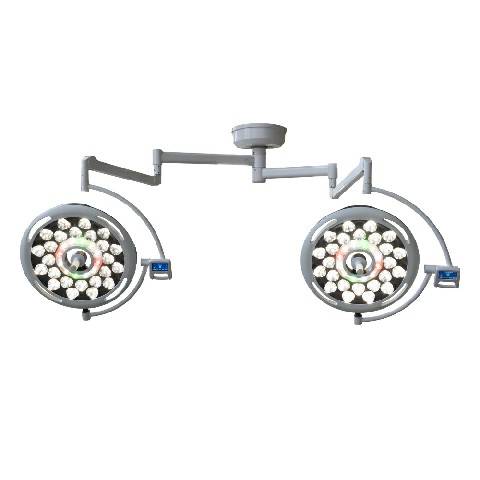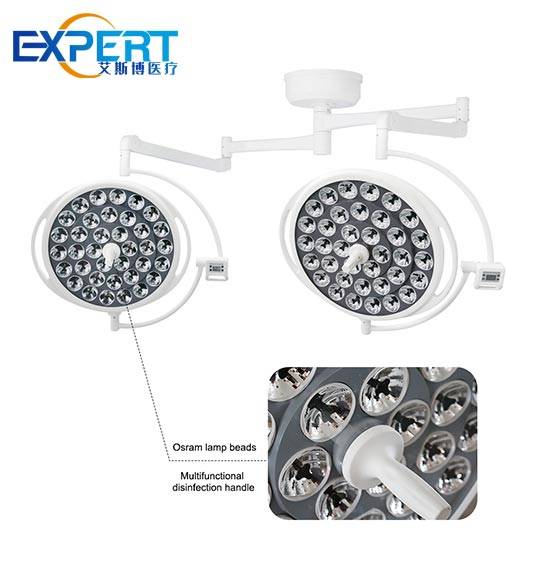Dirección
304 North Cardinal St.
Dorchester Center, MA 02124
Horas laborales
Lunes a viernes: 7:00 a. M. - 7:00 p. M.
Fin de semana: 10 a. M. - 5 p. M.
Dirección
304 North Cardinal St.
Dorchester Center, MA 02124
Horas laborales
Lunes a viernes: 7:00 a. M. - 7:00 p. M.
Fin de semana: 10 a. M. - 5 p. M.

One of the most crucial elements that contribute to successful surgeries is the operation room light.
¡Bienvenido a mi blog!
Antes de profundizar en el contenido, me encantaría que te unas a mí en mis plataformas de redes sociales, donde comparto más información, interactúo con la comunidad y publico actualizaciones. Puedes conectarte conmigo de la siguiente manera:
Facebook:https://www.facebook.com/profile.php?id=100071234835011
LinkedIn:https://www.linkedin.com/company/74943205/admin/dashboard/
YouTube:www.youtube.com/@shandongexpertmedicalequip4695
TikTok:www.tiktok.com/@expertmedical
Ahora, comencemos nuestro viaje juntos. Espero que el contenido que se incluye aquí te resulte interesante, interesante y valioso.
In modern healthcare, the operation room is a critical environment where precision, clarity, and focus are paramount. One of the most crucial elements that contribute to successful surgeries is the operation room light. The right operation room light ensures optimal visibility, reduces the risk of errors, and enhances the overall efficiency of surgical procedures. With advancements in technology, there are numerous options available, making the selection process more complex. This comprehensive guide will help you understand how to choose the best operation room light for your hospital, covering essential factors such as lighting technology, features, and maintenance.

The operation room light plays a vital role in surgical procedures, providing the necessary illumination to ensure that surgeons can see clearly and perform their tasks with precision. Inadequate lighting can lead to shadows, glare, and poor visibility, increasing the risk of surgical errors. Therefore, selecting the right operation room light is crucial for patient safety and surgical success.
Illumination: The primary function of an operation room light is to provide bright, focused illumination that mimics natural daylight. This helps surgeons see tissues and blood vessels in their true colors, which is essential for accurate diagnosis and treatment.
Reducción de sombras: A high-quality operation room light minimizes shadows, ensuring that the surgical field remains uniformly illuminated even when the surgeon’s hands or instruments are in the way.
Heat Management: Operation room lights are designed to produce minimal heat, preventing discomfort for both the surgical team and the patient. This is particularly important in lengthy procedures where excessive heat can cause fatigue and reduce concentration.
Flexibility and Positioning: The ability to adjust the operation room light’s position and focus is essential for providing optimal illumination at different angles and depths. This flexibility allows the surgical team to work efficiently without constantly adjusting their position.









When selecting an operation room light for your hospital, there are several key features to consider. Understanding these features will help you choose the best light that meets the specific needs of your surgical teams and the types of procedures performed at your facility.
One of the first decisions you’ll need to make is whether to choose an LED or halogen operation room light. Both types have their advantages and disadvantages:
The intensity of the operation room light is another critical factor to consider. The light should be bright enough to illuminate the surgical field without causing glare or eye strain. Most modern operation room lights offer adjustable intensity settings, allowing the surgical team to customize the brightness according to the needs of the procedure. Look for lights that provide a broad range of intensity levels to accommodate various surgical tasks.
The Color Rendering Index (CRI) measures how accurately a light source reveals the true colors of objects. A high CRI is essential in an operation room light, as it allows surgeons to distinguish between different tissues, blood vessels, and other critical elements during surgery. Ideally, the CRI of an operation room light should be 90 or higher to ensure accurate color representation.
The light field size refers to the area illuminated by the operation room light. A larger light field is beneficial for procedures that require a broad view of the surgical area, while a smaller, more focused light field is better for detailed work. Some operation room lights offer adjustable light field sizes, allowing the surgical team to switch between a wide or narrow focus as needed. Additionally, the ability to adjust the focus ensures that the light is concentrated where it’s needed most, reducing the risk of shadows and improving visibility.
Effective shadow management is crucial in an operation room light. Shadows can obstruct the surgeon’s view and make it difficult to see critical details. Advanced shadow management technology, such as multiple light sources or overlapping light beams, helps to minimize shadows and ensure consistent illumination across the entire surgical field. This feature is particularly important in complex surgeries where multiple team members are working simultaneously.
The operation room light should be easy to adjust and position, allowing the surgical team to quickly adapt the lighting to their needs. Look for lights with smooth, intuitive controls that can be operated with minimal effort. Additionally, the light should be easily sterilizable to maintain a clean and safe surgical environment.
To help you choose the best operation room light for your hospital, the following table compares key features of LED and halogen lights:
| Característica | LED Operation Room Light | Halogen Operation Room Light |
|---|---|---|
| Eficiencia energética | Alto | Moderado |
| Heat Production | Bajo | Alto |
| Esperanza de vida | Long (up to 50,000 hours) | Short (up to 2,000 hours) |
| Índice de reproducción cromática (CRI) | 90+ | 85-90 |
| Costo inicial | Más alto | Más bajo |
| Requisitos de mantenimiento | Bajo | Alto |
| Gestión de la sombra | Avanzado | Básico |
This table provides a clear comparison between LED and halogen operation room lights, highlighting the advantages and disadvantages of each option. While LED lights are generally more expensive upfront, they offer better performance, lower maintenance costs, and longer lifespan, making them a more cost-effective choice in the long run.

Choosing the right operation room light also involves evaluating the suppliers. The quality of the light itself is important, but so is the support and service provided by the supplier. Here are some key considerations when evaluating suppliers:
The supplier’s reputation in the market and their experience in providing medical equipment are critical factors. Look for suppliers with a proven track record of delivering high-quality operation room lights and supporting their products with excellent customer service. Reading reviews and testimonials from other hospitals can provide valuable insights into the supplier’s reliability.
A comprehensive warranty is essential when purchasing an operation room light. The warranty should cover defects in materials and workmanship, as well as any potential issues with the light’s performance. Additionally, consider the level of support offered by the supplier, including installation, training, and ongoing maintenance services.
Different hospitals have different needs, and the ability to customize the operation room light to meet specific requirements is a valuable feature. Some suppliers offer customizable options, such as different light configurations, mounting styles, and control interfaces. Customization ensures that the light fits seamlessly into your operation room setup.
After-sales service is another important consideration when choosing a supplier. Ensure that the supplier offers prompt and reliable service for any maintenance or repairs needed. This includes the availability of spare parts, technical support, and regular maintenance services to keep the operation room light in optimal working condition.
Selecting the best operation room light for your hospital is a critical decision that can significantly impact the success of surgical procedures. By considering factors such as lighting technology, light intensity, color rendering, shadow management, and supplier reputation, you can ensure that you choose a light that meets the specific needs of your surgical teams and enhances the overall efficiency of your operation room. Whether you opt for an LED or halogen light, the goal is to provide the best possible illumination for safe and successful surgeries.
The most important feature to consider is the quality of illumination, including brightness, color rendering, and shadow management. These factors directly impact the surgeon’s ability to see clearly and perform procedures accurately.
The CRI measures how accurately a light source reveals the true colors of objects. A high CRI is essential in an operation room light because it allows surgeons to distinguish between different tissues and blood vessels, which is crucial for accurate diagnosis and treatment.
LED lights are preferred because they are more energy-efficient, produce less heat, have a longer lifespan, and offer better color rendering compared to halogen lights. While they may have a higher upfront cost, they are more cost-effective over time.
Advanced shadow management technology minimizes shadows in the surgical field, ensuring consistent illumination even when the surgeon’s hands or instruments are in the way. This reduces the risk of errors and improves the accuracy of surgical procedures.
When evaluating suppliers, consider their reputation, experience, warranty and support services, customization options, and after-sales service. A reliable supplier will provide high